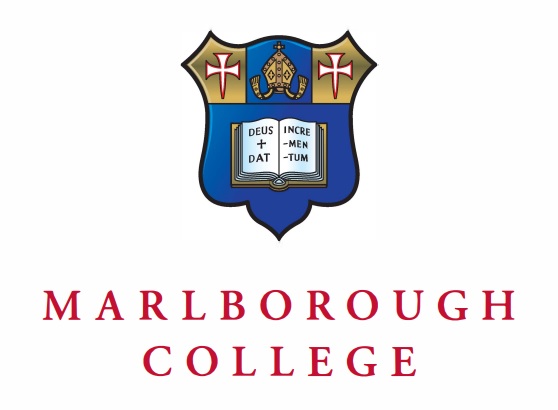December 2016 - Royal Wootton Bassett CC
Running a cricket club is hard enough at the best of times. Just getting teams together, pitches prepared, teas sorted, coaches qualified and volunteers engaged, not to mention the financial aspect of running a sustainable club. But when you’ve out-grown your existing facilities, what happens next? Do you look for a space to develop a second ground? Expand the current one? Or move elsewhere? These are all pretty serious questions, especially for clubs run exclusively by volunteers.
Royal Wootton Bassett CC took the bold third option. It wasn’t a decision they took alone, but as part of a sports association combining tennis, football and cricket at the Rylands Way sports ground. The facilities at the ground had supported the three clubs since the mid-1980’s although the cricket and football clubs had been present since 1935. By the end of the 20th century, 7 acres simply wasn’t big enough to support burgeoning memberships in all three clubs with the cricket section alone boasting 3 or 4 Saturday league teams, a Sunday team and 3 junior sides.
In 2003 the Wootton Bassett Sports Association started looking for land with the possibility of selling Rylands Way for development. Lead by the chairman of WBSA, Paul Harrison, the project team oversaw a programme that over 10 years later realised a brand new 23 acre site opened on the outskirts of the town. The new ground caters for each of the three clubs, and provides top quality sporting facilities including, for the cricket club, two grounds, a 3 bay outdoor practice net system and an artificial pitch.
This summer, the first one at the new ground, RWBCC’s 1st XI won promotion back into the West of England Premier League by finishing top of the Wiltshire Cricket League. It’s been a long, arduous, difficult journey with many peaks and troughs. We take a look at the journey and celebrate the achievement of many in making this happen.
Turning farmland into sports ground took a monumental effort and 15 months of construction. But it was the decade of negotiation that should be highlighted for the perseverance and dedication of the Wootton Bassett Sports Association volunteers. Projects of this scope simply don’t get realised without that and when you consider the agencies and bodies involved in bringing something like this to fruition, it requires careful management, diplomacy and sound guidance.
As all clubs who have successfully obtained grant funding will know, the process of securing that funding is often littered with barriers and moveable hoops to jump through. When the size of the project is measured by the number of zero’s on the balance sheet, the quantity of these items increases exponentially. It’s not a deliberate attempt to be difficult. It’s simply the level of accountability required, related to the size of funds being dispensed.
Throw in a major ground sale negotiation, the backlash of local people opposed to that sale, a ground purchase negotiation, a planning process to successfully satisfy various stakeholders and the ground development contract with a building contractor and you have a cauldron of complexities to deal with.
Life is made more complicated when there is more than one sports club involved. Funding bodies rarely wish to be the first to commit to a project, and often like to provide the final piece of the jigsaw. To be the organisation that made it happen. Then there are the legal people, the highways team, the planning agency, the accountants, the environmental considerations. It’s not an easy path.
Indeed there were times when the club didn’t think they would ever see the finished product. The many false dawns must have created waves of apathy and frustration as each successive summer passed. And with the future of the club in perpetual doubt, the ability of the club to retain players and develop future talent in terms of young players becomes very difficult.
But with turf being cut in 2014 and an opening date planned for the summer of 2015, the cricket club were able to plan for the 2016 season with new hope. There is still some work to do on the ground; some perimeter trees and a wild flower banked area to be planted but for season one the wicket has played well all things considered and the hope is that it improves further for next season as the irrigation beds in.
Significant change doesn’t come without its own inherent issues and even a fantastic facility like this has required a change of mentality. The cricket club now share the new pavilion with the other clubs and no longer have their own place as such. However, the integration of the clubs is something recognised by all as imperative to their collective success moving forward. Working together to address any issues has ensured that the move has limited any collateral.
The club now has a facility to match any others in the county, and many further afield, and opportunities aplenty to approach the next century of their history with real optimism. There will be time required to consolidate, to put in place the structures required to maximise the capacity of the site but the focus is on being a place where all are welcome and young players can learn their cricket from the age of 7. In the words of chairman Rod Smith, 'It is our responsibility to do as much as we can to promote and develop young players and hope they become active members of our club.'
An incredibly bold decision made 14 years ago to take an increasingly cramped site and transform into a high quality, purpose built hub for the local community. A difficult and strained decade of negotiation. A first season in a new home. A first season back in WEPL after three years away beckons in 2017. An exemplary ethos and another bright new dawn for another local club and another celebration of incredible volunteers to support community sport.
Wiltshire Cricket wishes to take this opportunity to congratulate everyone involved in this project and the best of luck in the short, medium and long term.











